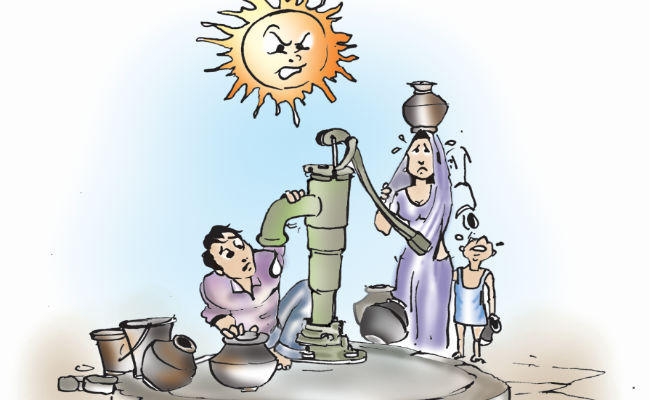
Bihar Weather: Patna. With the arrival of summer in Bihar, a decline in groundwater level has been recorded in some places of Kaimur, Jehanabad, Munger, Jamui, Bhagalpur, Gaya, Nalanda, Patna, Rohtas and Nawada. Also, there are complaints of less water in hand pumps in Kaimur, Jehanabad, Gaya and Nawada and boring gasps are already being heard in Munger, Bhagalpur, Patna. Water pressure has reduced in private borings in Maner, Danapur, Digha, Phulwari areas of Patna. Complaints in this regard are reaching PHED, after which the department has increased the monitoring of groundwater and directed to prepare the water table every 15 days. According to sources, complaints have been received in 14 hand pumps in Kaimur, 17 in Jehanabad and about 28 hand pumps in Nawada and Gaya.
Work intensified at department level for water conservation
Chand, Amawan, Adhaira, Barwan Kalan, Babhni Kalan, Dighar, Asthan, Jehanabad Gonawan, West Saren in Kaimur. Bhagalpur Peerpainti, Salempur, Ram Janipur. Munger Shrimatpur, Shankarpur. Rohtas Jayantipur. Work has been intensified at the department level for water conservation in Nalanda Sakri and Badail in Nawada, but PHED’s investigation has found that in these areas, there is water in many parts of the same ward, while in other parts there is no water. In such a situation, trained officers have been deployed to prepare groundwater reports.
Water will be delivered by tanker if needed
According to PHED officials, every year from March to August, water is supplied to critical wards through 463 water tankers, 15 water ATMs and 19 Jaldoots. In 2023, water has been supplied to people in Gaya 49, Munger 10, Bhagalpur six, Banka six, Kaimur three, Sheikhpura two, Lakhisarai three, Begusarai two, West Champaran two, Nalanda one, Jehanabad one, Aurangabad one. Water crisis has increased in 90 wards of areas like Sitamarhi, Samastipur, Madhubani, Darbhanga. In the last two years, water crisis has started in some areas of the ward,
Officers will work in critical zones by dividing them into four zones.
According to PHED sources, officers will work in critical zones by dividing them into four zones. Their coding will also be done as before. The department will provide training to assistant junior engineers in this regard. After this, they have been entrusted with the responsibility of monitoring groundwater depletion in their respective zones and removing planning related deficiencies.
Pre-monsoon rainfall in April will be less than normal
Here, the entire Bihar will be scorching in April. IMD has released the long-term weather forecast for April on Monday. The forecast has said that pre-monsoon rainfall in April is likely to be less than normal, while the mercury is likely to be above normal. The number of heat wave days in the state is likely to be more than normal. According to IMD, the highest temperature in entire Bihar is expected to be above normal. However, some parts of south-west Bihar may be affected by heat wave.
Also Read: Congress was evicted from its traditional seats in Bihar, know what happened with Kanhaiya.
Some parts of Bihar in the grip of heat wave
The minimum temperature in the state is expected to be much higher. IMD has shown most parts of Bihar in red color, which means hot winds can blow at night. Here in the state, pre-monsoon rainfall of more than 31 mm has been recorded in the month of March, which is 281 percent more than normal. The highest temperature of March in the state was recorded at 41.9 degrees Celsius in Vaishali. The lowest minimum temperature in the state was recorded in Motihari at 8.5 degrees Celsius.

